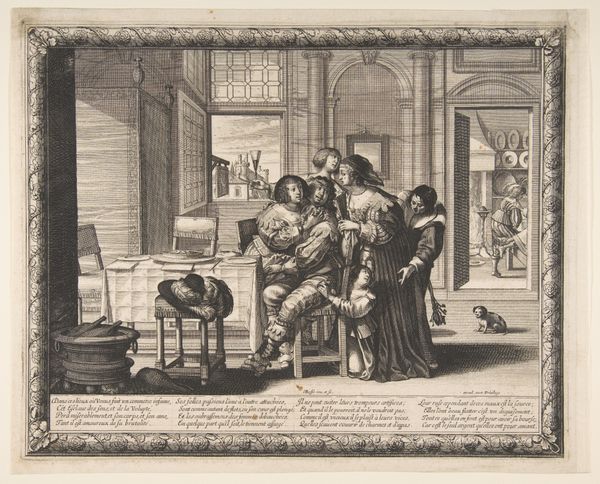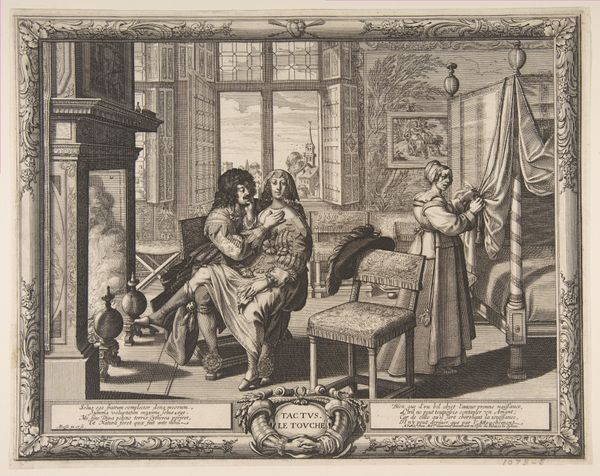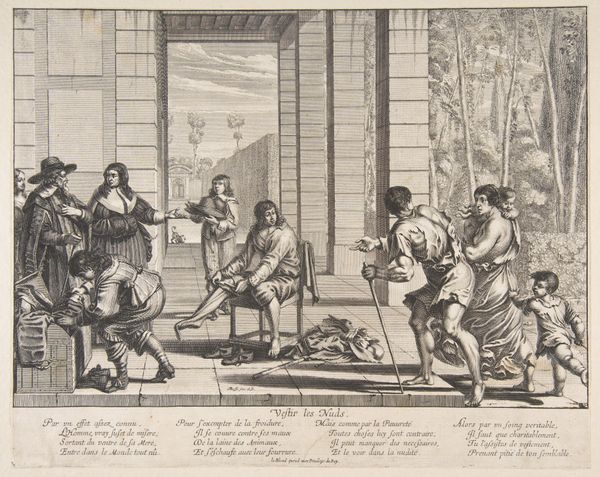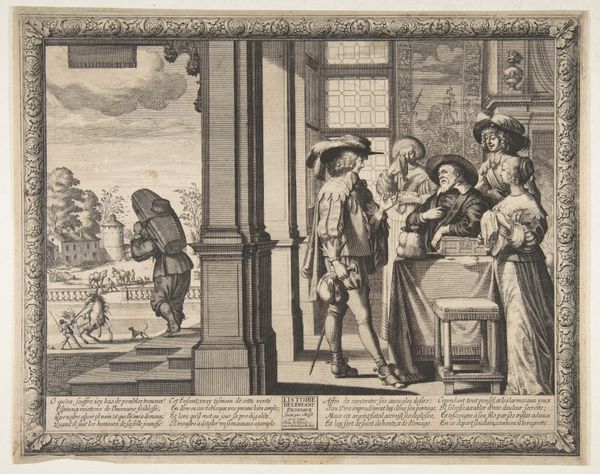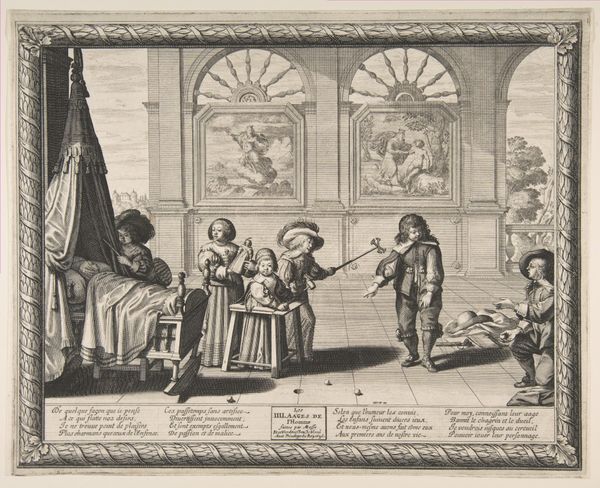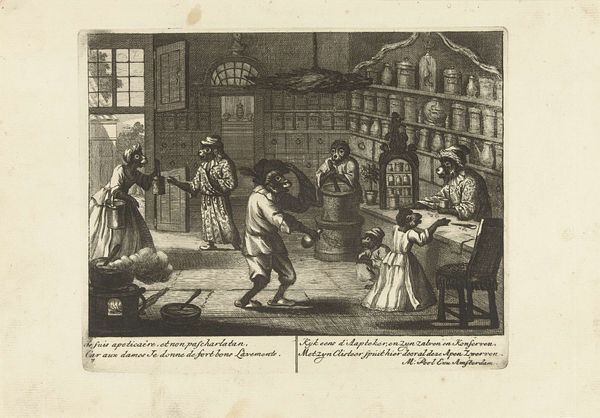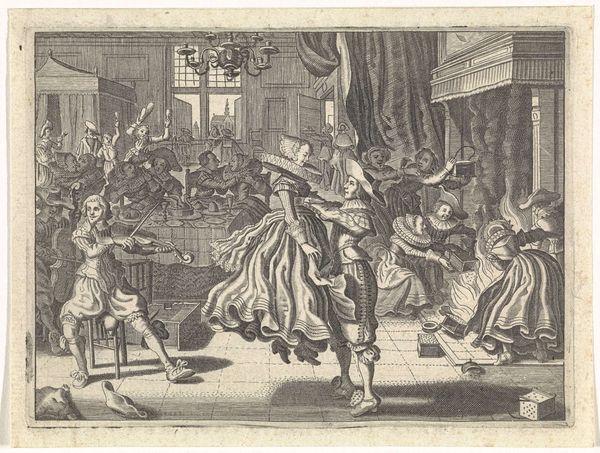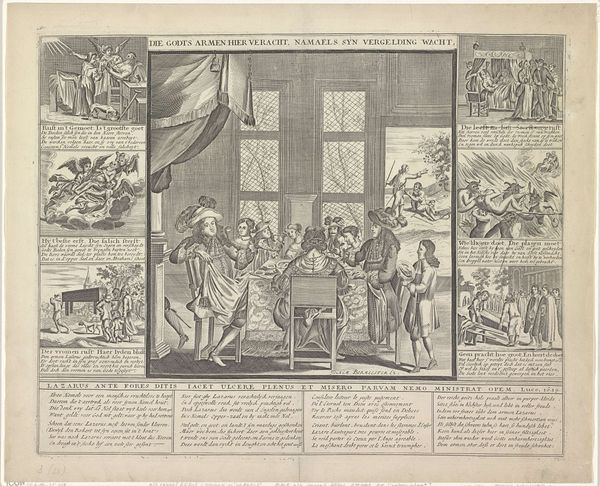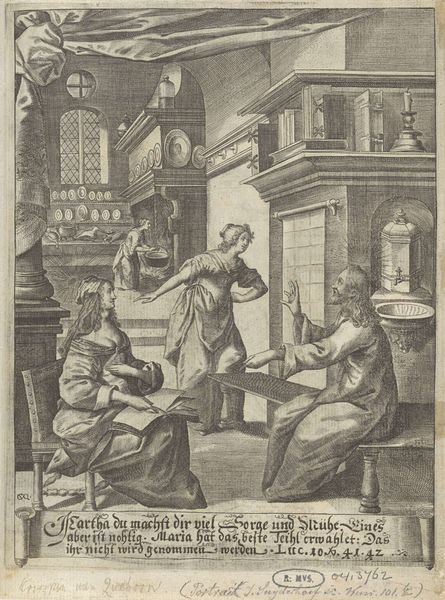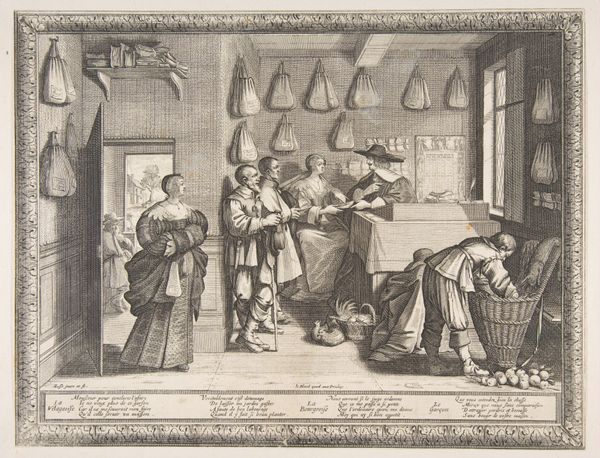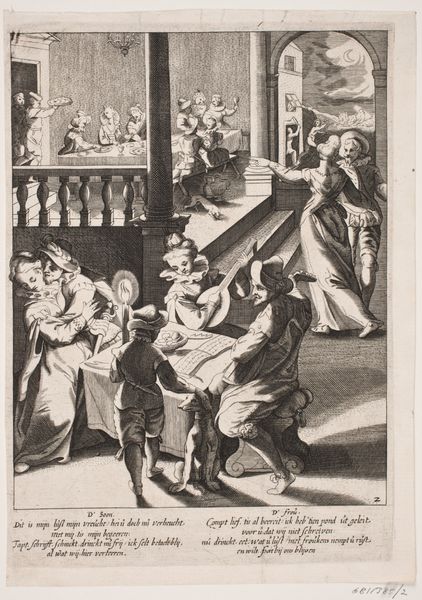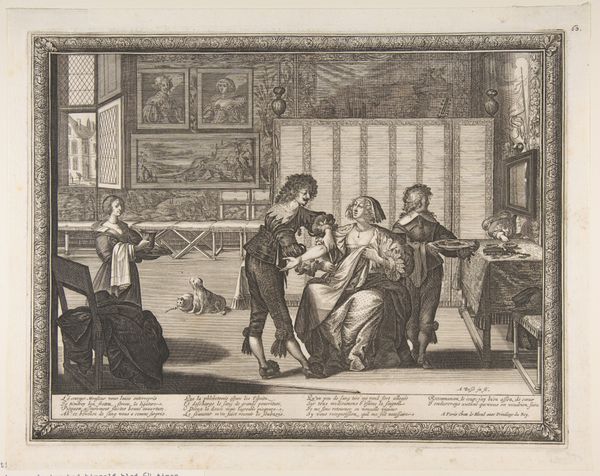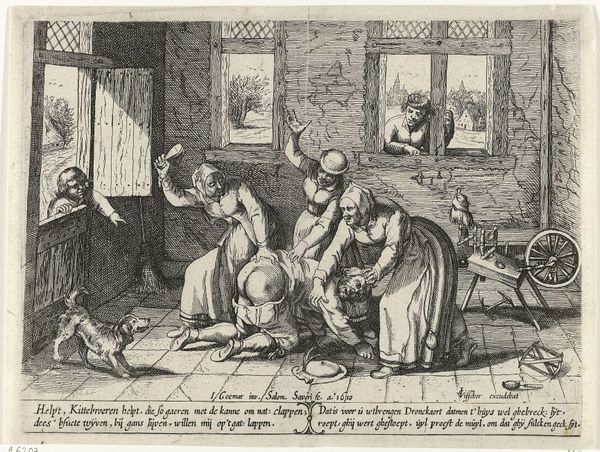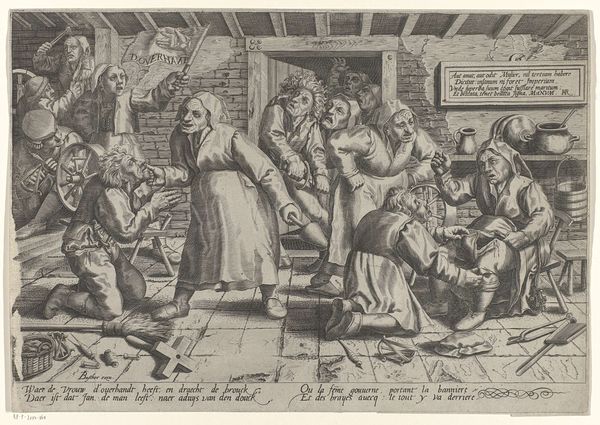
drawing, print, etching, engraving
#
drawing
#
narrative-art
#
baroque
# print
#
etching
#
perspective
#
figuration
#
line
#
cityscape
#
genre-painting
#
history-painting
#
engraving
Dimensions: Sheet (trimmed): 10 1/16 × 12 15/16 in. (25.6 × 32.9 cm)
Copyright: Public Domain
Curator: This etching and engraving by Abraham Bosse, created sometime between 1628 and 1638, is titled "Husband-Beater." It's a scene of domestic discord rendered in sharp, precise lines. What strikes you first about it? Editor: Immediately, the energy—it’s so active. The wife is clearly the dominant figure, weapon in hand, while the husband cowers, almost comical in his defeat. The light, despite the dark lines, seems to enhance the chaos. Curator: Bosse was very interested in depicting social realities and this print offers us a window into gender dynamics of the era, albeit one framed, perhaps, by the artist's own biases or observations. Consider the historical context—what does an image like this reflect about marriage and social power? Editor: Symbolically, there’s a lot at play here. Her posture is commanding, while he physically recoils. And look at the tools she wields - domestic implements turned into instruments of… not quite torture, but certainly humiliation. It seems a satirical take on traditional roles being subverted. Also the title given, the idea that a woman hitting her husband may have caused more amusement than concern. Curator: Yes, satire was often used to comment on social order and to enforce its codes by ridicule, making these type of acts appear as deviant and socially unacceptable. There's a suggestion here of disrupted hierarchies. This was produced during a time of significant social and political upheaval in France and Europe. Editor: Beyond the immediate drama, observe the detailed interior. The open doorway leads to a cityscape—a glimpse of the outside world contrasting with the enclosed, tense space of the home. A mirror in the back is placed strategically to frame the scene and add complexity. Curator: And a silent observer within, or at least a figure who seems amused and complicit of the shown acts. The use of linear perspective gives it a stage-like quality, drawing the viewer into the drama, and really into Bosse’s view point as well. It makes you wonder about the purpose and impact these images had for the French middle class audience. Editor: Considering all the symbolic layers, one cannot help but think about how visual narratives shape collective memory, sometimes reinforcing, sometimes challenging cultural assumptions. Food for thought on a volatile debate. Curator: It certainly offers us insight into how people, viewed domestic relations during the 17th century, making us question the role played by these kinds of satirical social depictions in influencing cultural behaviours.
Comments
No comments
Be the first to comment and join the conversation on the ultimate creative platform.
